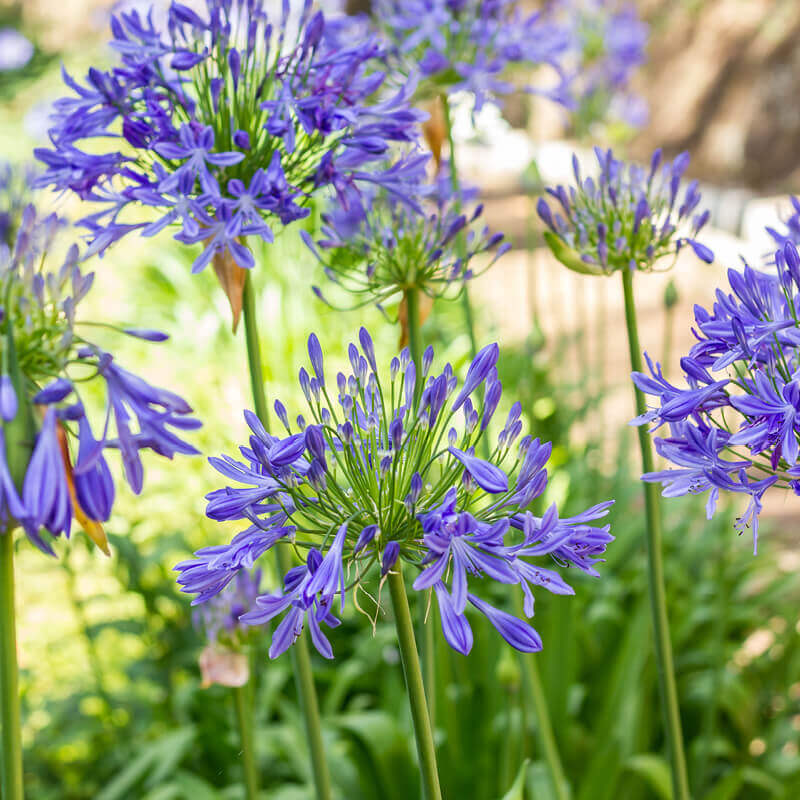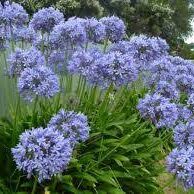Agapanthus Expanding Conditions: Dirt, Sunshine, and Watering
Agapanthus Expanding Conditions: Dirt, Sunshine, and Watering
Blog Article
Unleashing the Secret to Successful Agapanthus Cultivation: Tips and Techniques for a Flourishing Garden
In the world of gardening, growing agapanthus successfully requires a calculated method that includes numerous aspects of plant treatment. With mindful attention to detail, one can unlock the keys to supporting these magnificent blooms, resulting in a yard that flourishes with elegance and vibrancy. By recognizing the nuances of agapanthus growing, one can produce a setting where these plants grow and bloom abundantly. In the following discussion, we will explore crucial tips and methods that will assist you towards a flourishing agapanthus yard, supplying understandings into ideal methods, dirt conditions, watering strategies, and a lot more.
Growing Agapanthus: Best Practices
When growing Agapanthus, correct dirt prep work is crucial for making certain successful growth and advancement of these gorgeous flowers. Agapanthus, typically called Lily of the Nile or African lily, flourishes in well-draining soil with a slightly acidic to neutral pH degree - Agapanthus. Prior to planting, it is vital to amend hefty clay dirts with raw material such as compost or peat moss to enhance drainage and offer essential nutrients for the plants
To plant Agapanthus, select a place that receives complete sunshine to partial shade, as this will certainly advertise healthy and balanced development and abundant blooming. Dig a hole twice the diameter of the plant's origin sphere and place the Agapanthus at the very same depth it was previously expanding. Carefully backfill the opening with dirt, pushing down strongly to get rid of any type of air pockets around the roots.
Water the recently grown Agapanthus extensively and remain to maintain the soil evenly wet, particularly throughout the plant's energetic expanding period. Agapanthus. Applying a well balanced fertilizer once a month can better sustain the plant's development and blooming. By following these best practices for planting Agapanthus, you can create a stunning display of these captivating flowers in your garden
Suitable Dirt Conditions for Agapanthus
For ideal growth and blooming success of Agapanthus plants, ensuring the soil conditions are excellent is vital. Agapanthus likes dirt that is abundant in nutrients, so integrating a balanced fertilizer during the growing season can promote healthy growth and vibrant flowers.

Watering and Feeding Tips
To make certain healthy and balanced development and lively blooms, correct watering and feeding techniques are necessary for successful Agapanthus cultivation. Agapanthus plants benefit from regular watering, especially throughout the growing season.
When it comes to fertilizing Agapanthus, a well balanced fertilizer with equivalent components nitrogen, phosphorus, and potassium can be applied in the springtime to promote healthy development and blooming. Slow-release fertilizers are ideal for giving nutrients gradually over an extended period. Avoid over-fertilizing, as this can cause excessive vegetation development at the cost of blooms.
Additionally, integrating raw material like compost right into the soil can improve nutrient degrees and enhance dirt structure, helping in the general health and wellness of the Agapanthus plants. By following these watering and fertilizing ideas, garden enthusiasts can ensure their Agapanthus plants flourish and generate spectacular screens of blossoms.
Trimming and Deadheading Methods
Appropriate pruning and deadheading methods play a vital duty in keeping the wellness and looks of Agapanthus plants, enhancing the important techniques of watering and fertilizing for successful cultivation. Trimming Agapanthus involves removing spent blossom heads, yellowing or dead fallen leaves, and overall shaping of the plant to advertise much better growth. Deadheading, the process of getting rid of faded blossoms, not only boosts the plant's look yet likewise motivates more growing.
When deadheading Agapanthus, it is a good idea to clip off the blossom stem at the base using sharp, tidy shears. This procedure redirects the plant's energy content from seed production back into origin and foliage growth, advertising a healthier and more robust plant. Normal deadheading can expand the flowering period of Agapanthus and prevent self-seeding, which can bring about overcrowding.
In terms of pruning, Agapanthus normally gain from a light trim after blooming to clean up the plant and motivate fresh growth. Reducing the invested flower stems and removing any broken or dead vegetation assists preserve the plant's vitality and general appearance. Nevertheless, it is vital to stay clear of cutting into the crown of the plant, as this can deteriorate its health and wellness.

Protecting Agapanthus From Pests and Diseases
Executing reliable insect and illness management techniques is essential to guarding the health and vigor of Agapanthus plants in growing. Agapanthus are typically hardy plants, yet they can still drop victim to various parasites and illness if not correctly looked after. One typical parasite that affects Agapanthus is the Agapanthus borer, a caterpillar that passages into the plant, creating damages to the flowers and leaves. To avoid problems, routine evaluation of the plants is essential. If borers are found, they can be manually eliminated, or insecticidal soap can be used as a control measure.
Along with insects, Agapanthus are vulnerable to conditions such as origin rot and fungal leaf spots. These concerns can frequently be avoided by ensuring appropriate drain and avoiding overwatering. If indications of condition appear, affected components of the plant must be quickly gotten rid of to stop additional spread. Fungicides may likewise be made use of as a therapy step, adhering to the maker's directions thoroughly. By remaining cautious and attending to parasite and disease issues without delay, garden enthusiasts can assist their Agapanthus prosper and flourish.

Verdict
Finally, effective cultivation of agapanthus requires appropriate planting strategies, perfect soil conditions, adequate watering and fertilizing, routine trimming and deadheading, and security from diseases and parasites. By complying with these methods and suggestions, gardeners can ensure a growing garden filled up with beautiful agapanthus flowers. Agapanthus. Keep in mind to keep constant treatment and focus to information to advertise the health and long life of these sensational plants
When planting Agapanthus, proper soil prep work is vital for making sure effective growth and growth of these stunning flowers.Water the newly grown Agapanthus extensively and continue to maintain the dirt evenly wet, specifically throughout the plant's energetic growing season.For ideal growth and growing success of Agapanthus plants, guaranteeing the dirt conditions are excellent is vital. When hair transplanting or planting Agapanthus, make sure the soil is well-prepared to provide the necessary structure for the plants to develop themselves successfully. One common try this parasite that affects Agapanthus is the Agapanthus borer, a caterpillar that tunnels right into the plant, triggering damage Homepage to the fallen leaves and blossoms.
Report this page